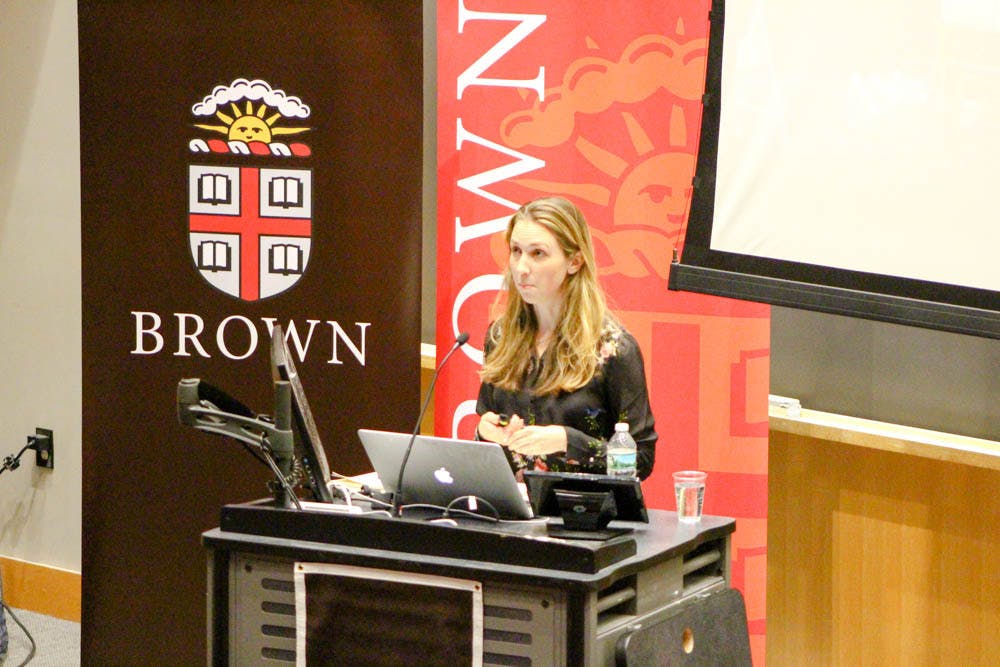When the first image of a black hole was revealed to the world Wednesday, New Yorker Staff Writer Sarah Stillman felt moved by the connections between the scientific discovery and her worldview of journalism.
The award-winning journalist tries to keep in mind the “black holes of whose stories we tell and whose stories we don’t tell. Black holes of narrative and empathy,” she said.
Stillman, who is also the director of the Global Migration Project at Columbia Journalism School, spoke at a talk titled “When Deportation is a Death Sentence: Covering Immigration in the Trump Era” for the 19th Annual Casey Shearer Memorial Lecture Series. Stillman’s journalism focuses on sharing stories of people and groups typically overlooked by the media. Her first article for the New Yorker, titled “The Invisible Army,” highlighted the conditions of “third-country nationals” working in war zones for the U.S. military.
Other than soldiers, military bases are also home to bustling internal economies. One of the first things Stillman saw at the Baghdad Military Base in Iraq was a Cinnabon, and then a McDonalds, and then a Taco Bell. “On most of the military bases … there were beauty salons and Pizza Huts staffed almost exclusively by immigrant labor.” Most of these workers were not legally protected and had been persuaded to work in war zones with the promise of lucrative jobs in Gulf countries.
Stillman’s approach to journalism is influenced by her background in anthropology, which has taught her to value informal and intimate moments “about the everyday” that are often deemed irrelevant during conventional news reporting. When she reported on a group of Central American mothers searching for their missing loved ones — who had all tried to cross the border into the United States — she wrote most of her story about their day-to-day lives and interactions. She is more interested in what comes after the front-page story, what she called “the Act Two and Act Five,” a concept she explored through a radio piece for the New Yorker about parenting after deportation.
Stillman also stressed upon the “value of kinesthetic knowledge” and presence in journalism. “So much of good journalism is about the shoe-leather side of the work and actually showing up, which is increasingly in peril in the current media landscape,” she added.
Beyond the on-the-ground work, good journalism also connects the individual with the systemic and structural, Stillman said when describing her current work on a large-scale project to document instances of deportation to dangerous circumstances.
“I’ve created a database with my students at Columbia and documented more than 117 cases,” she said. “We started mostly with Mexican and Central-American individuals who had come here seeking asylum and sent back to harm, and now we have expanded to people from all parts of the world.”
The project aims to go beyond the hypothetical of “sending people to their deaths” and “to try and restore the names and faces and real humanity to those individuals,” she said.
Jack Brook ’19, a former Herald senior staff writer who attended the event, liked the analogy of black holes to journalism, which he relates to in his own writing. “I found it helpful to hear about how she finds stories and what she looks for,” he added.
“As a teacher of writing, I was very appreciative of how she wove in her own evolution as a writer … who evolved to be brave enough to pursue such difficult stories,” said Elizabeth Taylor, distinguished senior lecturer in English and the co-founder of Brown’s non-fiction writing program. Taylor also thought Stillman’s insights on the duties of a journalist in helping their subjects and sharing their stories were very pertinent to the time.





